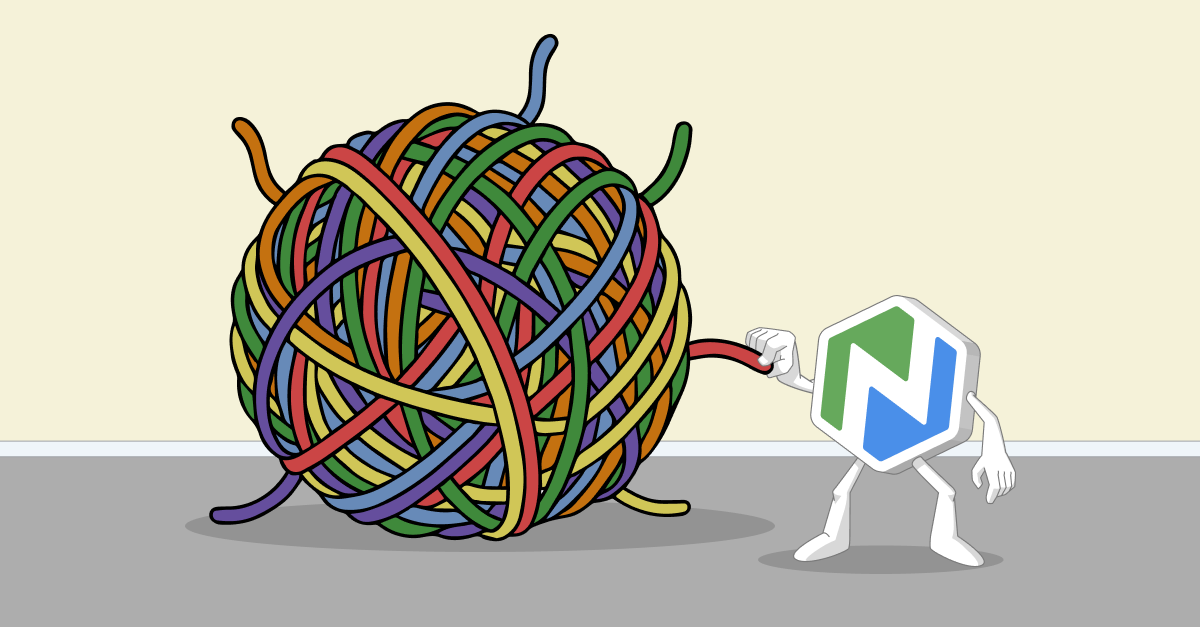How to Move Past Myths & Train for Succession Planning
Clear up common misconceptions about succession planning, get step-by-step guidance, and find the best ways to meet your team’s training needs.

Some people think Succession Planning is just for large organizations. But in reality, it is often more important for smaller organizations. According to HRM, “succession planning can be of great value to smaller organizations that have fewer resources available for knowledge management programs and the formal, structured development of employees.”
So, what exactly does succession planning involve, and what’s the best way to go about it? Keep reading to find out. In this article, we'll cover:
- The What, Why, and When of Succession Planning
- Succession Planning Myths
- How to Create a Succession Plan (part of a free tutorial package)
- Which types of training can help you meet different succession planning training needs (including a downloadable infographic)
The What, Why, and When of Succession Planning
In a previous blog post, we looked at what a succession plan is, why you should have one, and how to get started. That article is a good place to begin if you’re new to succession planning.
We also have a comprehensive tutorial that walks you through the steps. You can jump to How to Create a Succession Plan to learn more.
Simply stated, succession planning prepares your organization for change. Many things can trigger the need for a succession plan, including things we don’t want to think about, like:
- Departure: people take other jobs, retire, or move on
- Death: it’s a fact of life and can happen unexpectedly
- Illness/disability: this can be short- or long-term
- Advancement: someone might move into another position, leaving their position open
- Personal/family: changes to family circumstances can impact availability
- Change of status: moving from full-time to part-time work, or in-person to remote
Despite these realities, it’s easy to get distracted by daily operations and put off planning for the future. You might think about big projects, like capital campaigns, but give little attention to the skills, networks, and knowledge that keep your organization going day to day. Take a moment to imagine what might happen if one or two key people in your organization left suddenly.
Succession Planning Myths
Once you recognize the need for succession planning, you may run into some misconceptions. Let’s look at some common myths.
Myth: You’re Training Your Replacement
Fact: Succession planning is about the organization as a whole, not the individual.
Erik van Vulpen of the Academy to Innovate HR (AIHR) explains that the purpose of succession planning is “to ensure that when someone leaves, someone else is ready and qualified to take over that role and be up and running in no time.” Another way to look at it is that you’re training your replacement for your own promotion. If you hold a role that is important enough to warrant succession planning, chances are you’re also in a position to move up to an even bigger role.
Approaching the topic in a non-threatening way can help people get past their fear that they’re training their replacement. You might ask, “How do you want all the good work you’ve done to continue if you leave or retire? How can we ensure it keeps going?”
Myth: Succession Planning is Only for Executives
Fact: Succession planning should focus on any position that’s hard to replace.
Many leadership roles are mission-critical, but you also want to look for other specialized knowledge, skills, or relationships throughout the organization to ensure you cover all bases. Sometimes people with the quietest roles are the ones keeping everything humming along.
In an AIHR article, Monique Verduyn advises you to “conduct an analysis across departments to pinpoint roles that have a direct impact on the company’s bottom line, operational efficiency, and strategic direction.”
Myth: Succession Planning is a Quick Process
Fact: Succession planning takes a long time.
The Society for Human Resource Management (SHRM) indicates “succession planning is a 12-36 month process.” It takes time to identify critical roles, consider future needs, and identify any gaps. The process also involves many stakeholders, including executives, managers, and potential successors.
Myth: You Only Need to Do Succession Planning Once
Fact: Succession planning should be systematic and ongoing.
Monique Verduyn states, “Planning continuously is crucial for ensuring organizational resilience and adaptability.” Organizations are constantly changing and evolving, and so should your succession plan.
People come and go, and organizational needs change in ways you can’t always predict. You should review your plan regularly and update it as needed to ensure it remains relevant. Consider following a formal update process annually—or whenever significant organizational changes occur.
Myth: Your Succession Plan Can Stand Alone
Fact: Identified successors need to be trained and developed.
A succession plan is more than a document that points to possible leaders; it helps you build future leaders throughout your organization. Developing leaders from within is often more efficient and ensures continuity.
Erik van Vulpen says, “It makes sense to integrate talent and leadership development with succession planning.” You want to help potential leaders bridge the gap between where they are and what the organization needs for the future.
How to Create a Succession Plan
“The best time to repair the roof is when the sun is shining.”
~ John F. Kennedy
If this is all sounding a bit complicated, no worries. We’ve created a Succession Planning Basics tutorial and workbook that walks you through the process.
By the end of the tutorial, you’ll be able to:
- Define succession planning
- Identify the benefits of succession planning
- Identify key roles in succession planning
- Develop a succession plan
You can access the tutorial (and more!) in our free Establishing Policies and Procedures tutorial bundle.
Training for Success(ion)
Your succession plan will likely uncover a lot of different training needs, and knowing when to use which type of training can be tricky. So, let’s look at a few common needs, the best ways to meet them, and how a subscription to Niche Academy can help.
Need: Internal Flexibility and Agility
Kind of training: cross-training and job shadowing
Why: As more people learn what others in the company do, you can quickly and efficiently move people between tasks.
Jordan Nottrodt, an HR Expert Contributor, explains: “Cross-training is a clear investment in your team. It makes employees feel valued, challenges them in new ways and shows that your company offers opportunities for development.”
This option is not only great for future planning; it also addresses moments when you need someone to step in when someone is sick or on leave. You can maintain operations while building skills. And, you don’t have to do everything in person. Virtual job shadowing allows you to increase access and provide flexibility.
How Niche Academy can help: You can enhance in-person cross-training with tutorials to reinforce and contextualize learning. If you’re training someone to answer the phone, follow up the one-on-one session with our tutorials on Telephone Skills.
Need: Management skills
Kind of training: Online, asynchronous tutorials; mentorships; certifications; academic courses.
Why: Many succession plans focus on helping current employees move into leadership or management roles. But just because someone knows how to do a job doesn’t mean they know how to manage other people doing it.
Don’t wait until someone becomes a manager to train them. Start building management skills in employees before they’re promoted, as part of the succession plan.
How Niche Academy can help: You can offer training quickly and consistently with free, ready-made tutorials from our Market on topics like setting goals, managing remote teams, bullying, feedback loops, ADA basics, and many more.
Key tutorials include:
- Best Manager Practices Series
- Balancing Internal and External Hiring
- Conflict Resolution for Managers
- Creating an Employee Performance Plan
- Developing Employee Career Paths
- Developing Goals With Direct Reports
- Employee Rights for Managers in the USA
- Encouraging a Speak-up Culture
- Interviewing Skills
- Managing Remote TeamsScheduling
- Supporting Staff Dealing With Personal Problems
Need: Relationships and Networks
Kind of training: Mentorships, sponsorships, and networking opportunities (such as conferences).
Why: Succession planning isn’t just about replacing technical or managerial skills. Some of the most important things people contribute to an organization are their networks and relationships. Keeping this institutional knowledge is essential to your mission’s success.
Tracy Lawrence for Forbes claims, “opportunities like workshops, leadership training, and mentorship programs allow employees to learn and grow together, fostering professional relationships and camaraderie. Continuous opportunities for development ensure that employees are performing at the top of their game and reap rewards in loyalty and connectedness.”
How Niche Academy can help: You can provide soft skills training to support networking and mentorship—teaching staff how to listen better, interact with different people, and build partnerships.
Key tutorials include:
- Active Listening
- Cultural Competency
- Critical Thinking
- Finding Your Purpose as a Leader
- Establishing Mentorships in the Workplace
Need: Highly Technical or Specialized Skills
Kind of training: Formal courses, certifications, apprenticeships, or degrees.
Why: Highly technical skills may need more formal coursework, certifications, or apprenticeships. Investing in these allows you to grow employees internally—building capacity and reducing hiring costs.
How Niche Academy can help: You can enhance formal learning with tutorials and certifications specific to your organization. Our authoring tools make it easy to create or personalize ready-made training to meet your exact needs.
Need: A Continuous Culture of Learning
Kind of training: Short, asynchronous training tutorials and ongoing upskilling.
Why: Making continuous learning part of your culture allows you to cover a lot of bases—from new hires to leadership. It’s also a great way to attract new talent, especially younger generations looking for career development opportunities.
How Niche Academy can help: You can create learning pathways to guide learners through custom and ready-made tutorials in a particular order to meet your specific objectives.
If you would like to save these training tips for future reference, download our infographic.
Succession planning is complex and ongoing, and many organizations fail to do it. We want to make sure your organization isn’t one of them!


.png)
.png)
.png)

.png)
.png)

.png)

.png)
.png)
